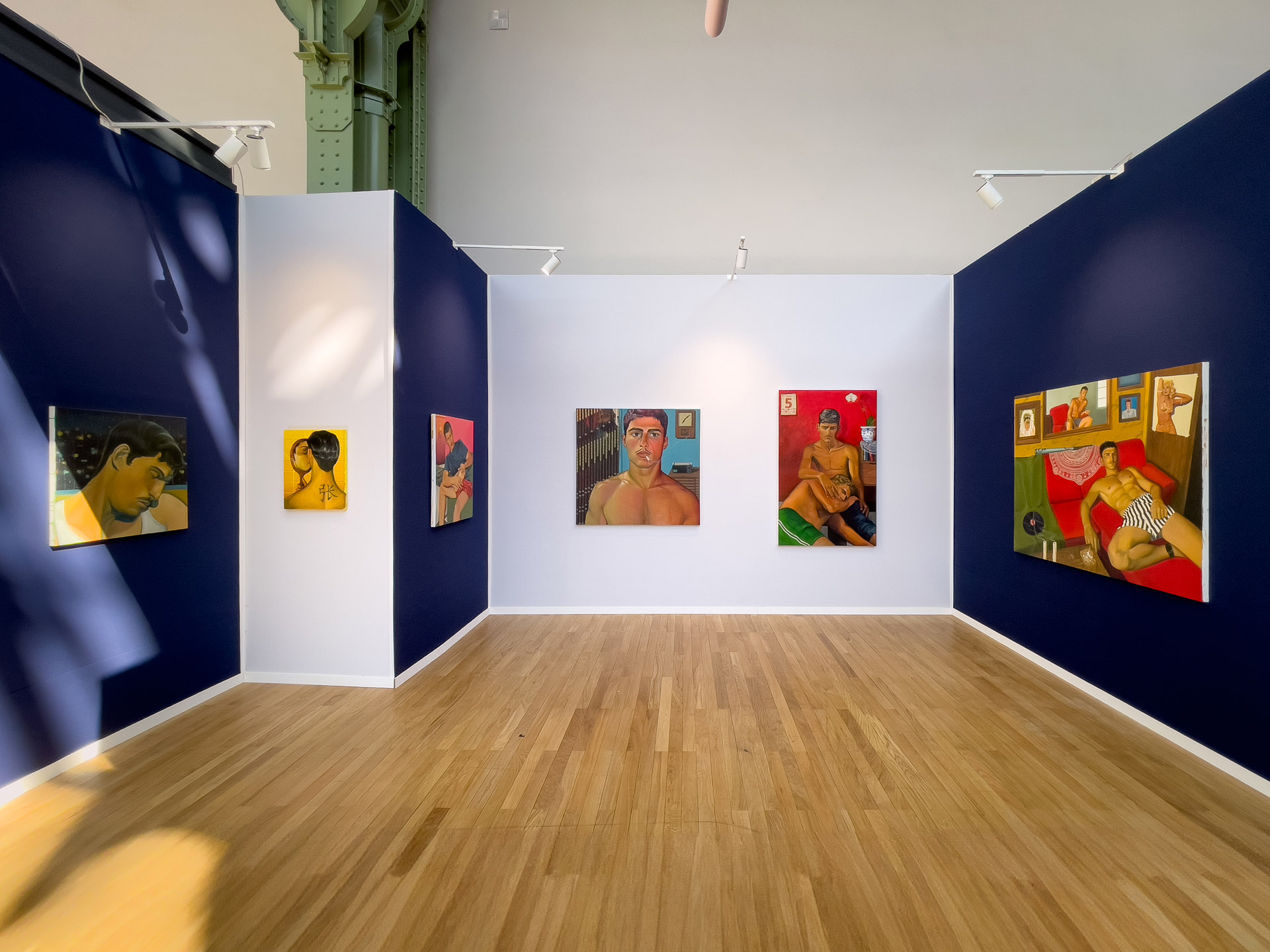

A recurring feature of your work is the references you depict in them, from Frida Kahlo, to Sinead O’Connor, to tarot cards. How do these influences shape the narratives or undertones in your paintings?
One of my earliest memories of a “wow, I love art” moment was when a friend brought tarot cards to school. I was looking at the graphics, the classic yellows and blues that you picture on a tarot card. I personally don’t believe in them, but I find the graphics to be quite alluring. When it comes to musical heroes, I find that their passion for music is inspiring. – how they write certain songs, their voices, and the memories they help me create are things I will always give credit to. Music helps me shape my works. I find a certain lyric that impacted me, and I can automatically think of an image in my head.
More than just lust, your work explores attraction beyond physical allure, through emotion and identity. How do you aim to convey this in your painting?
Many of my works feature colours with high contrast, which contrasts with the underlying message of the painting. Despite this, the stillness within the work evokes a sense of melancholy, often accompanied by blank expressions. What I find intriguing is that the more melancholic my artwork appears, the more people seem drawn to it. I’ve come to realize that we, as humans, instinctively seek things to connect with—whether they be places, faces, material objects, or, in the case of my paintings, familiar emotions.
With this in mind, I believe that the “attraction” to familiar feelings is a natural response, one that helps us relate to the world around us.

There is a tension between vulnerability and strength in your depictions of men. How do you navigate this contrast, and what does it mean to you to portray both qualities simultaneously?
Growing up, I used to cry over the smallest things, especially when my parents raised their voices or when there was a slight change in tone. I felt embarrassed because I was taught that being a man meant I had to be strong and show no emotion. As I got older, I knew that was not true. With this back-and-forth control of emotions, I’ve come to appreciate the value of allowing oneself to be vulnerable and letting go. However, I still stick to the same sentiment of painting my men with stoic faces or a lack of emotion. I think vulnerability is strength – controlling your emotions is strength. Your emotions are depicted through your face, maybe that’s why I love painting faces. A slight raise of the eyebrow or a flare of the nostrils – slight facial changes can show a lot.

What drives you to continue exploring themes of masculinity, vulnerability, and intimacy?
I love the idea of something being bold yet tender. Emotions are a complex set of ideas and feelings that require time and patience to understand. In my upcoming solo show titled ‘Some Things Last A Long Time’, I explore personal emotions I experienced from the moment I became aware of my own sexuality. As an artist, I revisit moments that I think of from time to time. I am somewhat sentimental about many things, especially my feelings. Something about the virility of men—being a straight-passing man—and the complexity of being queer in the mix is quite an introspective thought. I am attracted to painting ideas of feelings in branches. Intimacy could mean lust, and it could also mean love—two very different things that could exist at the same time.
Israfil Ridhwan’s work will be presented by Cuturi Gallery at Art Paris 2025, taking place 3-6 April at The Grand Palais, Paris, France. For more information, please click here.
INTERVIEW COURTESY OF ART WORLD DATABASE AND ISRAFIL RIDHWAN, APRIL 2025.

